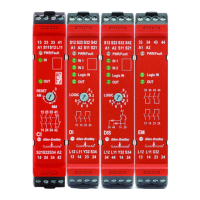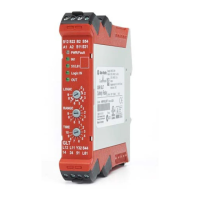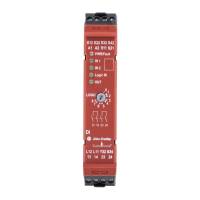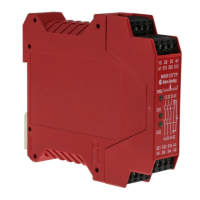Rockwell Automation Publication 440R-UM013G-EN-P - December 2022 17
Chapter 3
Power, Ground, and Wire
Wiring Requirements and
Recommendation
• Allow adequate space between the I/O wire ducts and the top and bottom of the safety
relays and front face to maintain an ambient temperature below the rated operating
temperature of the safety relays.
• Route incoming power to the safety relay by a path separate from the device wiring.
Where paths must cross, their intersection must be perpendicular.
• Do not run signal or communications wiring and power wiring in the same conduit.
Route wires with different signal characteristics by separate paths.
• Separate wiring by signal type. Bundle wiring with similar electrical characteristics
together.
• Separate input wiring from output wiring.
• Label wiring to all devices in the system. Use tape, shrink-tubing, or other more
dependable means to label wire. Use colored insulation as well to identify wiring by
signal characteristics. For example, use blue for DC wiring and red for AC wiring.
Wire Size
Each terminal accommodates copper wire with size from 0.2…2.5 mm² (24…14 AWG). Use
copper that withstands 60…75 °C (140…167 °F).
Terminal Torque
Torque terminals to 0.4 N•m (4 lb•in).
Terminal Assignments
Safety relays have four terminals: two on the top and two on the bottom. As shown in Figure 5
on page 18, the X2 and X4 terminal markings apply to the rear terminals. The X1 and X3
terminals apply to the front terminals.
ATTENTION: Before you install and wire any device, disconnect power to the
system.
ATTENTION: Calculate the maximum possible current in each power and
common wire. Observe all electrical codes that dictate the maximum
current allowable for each wire size. Current above the maximum rating
causes the wiring to overheat, which can cause damage.

